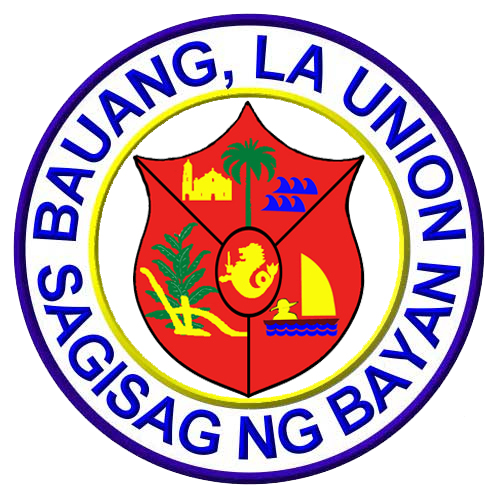DISTRICT V
BARANGAY BOY-UTAN
VISION
It is our VISION to have Progressive/Peaceful Community, where the Residents have Unity through the Leadership of the Elected Barangay Officials
MISSION
To promote cooperative among residents; To establish a progressive Barangay Boy-utan; To uplift the standard of living of every resident and to contribute to the development of our community
BRIEF HISTORY
Barangay Boy-utan is one of the farthest barangays in the Municipality of Bauang. One reaches it through a provincial road connected from the National Highway just across the Bauang Bridge on the southern bank of Bauang River. It is a progressive community due to the cooperative efforts of the community people.
The name Boy-utan according to old folks of the barangay came from the word “Utan” which in Visayan language is a vegetable. In a story, about seven boys who were the first descendants of the said barangay were famous in planting vegetables during Spanish time. It came to a legend that the place then came from the word Boy-utan in memory of the seven boys recorded as the first descendants of the place.
BARANGAY BUCAYAB
VISION
To enhance the living condition of the Barangay people good governance and to maintain unity,peace and order and productivity as well as to encourage everyone to participate for Barangay development.
Ti panagrang-ay ti Barangay ket magun-od babaen iti kinaadda ti urnos ken talna kasta met ti pinagmaymaysa a panagtrabaho nga mangted ti nabuslon nga apit para iti panag-dur-as.
MISSION
To maintain and improve production for the upliftment of the living condition of Barangay people in coordination to all concerned government agencies.
Panangpasayaat iti apit tapno dumur-as iti Barangay babaen iti tulong dagiti nadumaduma a programa iti gobyerno.
BRIEF HISTORY
Barangay Bucayab is one of the farthest Barangay in the Municipality of Bauang, one reaches it through a Provincial road connected from the National Highway just across the Bauang Bridges on the Souththern Bank of Bauang River. Though it is a progressive community due to the cooperative efforts of the community people.
The name “BUCAYAB” according to some old folks the Barangay came from the word “GUCAYAB”. A story which was narrated by an old man who lived in one of the caves of the mountain part of the place. He was alone by himself and lived by hunting wild animals and harvesting wild fruits which abound his surroundings. One day, an adventurous Spanish soldier hunting animals who reached his place asked in Spanish dialect with some signs of his hands who he was. The man thought the soldier was asking the name of the place where he lived and answered “GUCAYAB”. The Spanish soldier heard “BUCAYAB” so he told his friends about the place “BUCAYAB”. From then on, Bucayab became the name recorded in the history as one of the Barrios of our town, Bauang. It was the first sitio of Barangay Boy –utan, a Barangay western part of it. It was separated as a Barangay just before the second world war.
It is on the Southern part of the town, bounded in the north by the Bauang River. In the East, Barangay Cabalayangan, in the West, BarangayBoy –utan, and in the South, BarangayPalugsi – Limmansangan. The distance of Barangay Bucayab from the Poblacion is about 3 kilometers and it is accessible thru transportation. It has a land area of 3.5 square kilometers composed of plains, mountain and non-cultivated hills planted with trees and etc.
BarangayBucayab has a tropical climate. It has two pronounced season, the dry and rainy season. The wet or rainy season from June to October and the cool dry season from November to February and the hot dry season from March to May of the year.
BARANGAY CALUMBAYA
BRIEF HISTORY
There were no written records which revealed some factual data on how barangay Calumbaya emerged to be called such. But it was a consensus of the old residents and the natives of the place that the word Calumbaya originated from plants like “lomboy” (duhat) and “bayabas” (guavas) which abound in the place many years ago. Hence Calumboyan, Cabayabasan were summed up to Calumbaya.
The early settlers of the barangay are mostly Ilocano. Business and trade with neighboring towns and provinces which also resulted to intermarriages made the populace a mixture of races from the different regions of the country to foreigners of other lands as years rolled by.
BARANGAY CABALAYANGAN
BRIEF HISTORY
The name of the barangay originated from a banana plant named “BALAYANG” which means that the place has so many Balayang banana plants planted around the place. Because of the abundance of these fruits, the people often served these bananas to their visitor that was why the place was called CABALAYANGAN.
Barangay CABALAYANGAN is U-shaped. The sides and base of the letter represent the mountain ranges surrounding it on three sides. The open space between the ranges is the valley. The contour of the valley is jarred by a few low hills. It is well-drained by a crooked brook which serves as the pathway to the interior of the exit from it. Since the brook bed is hard, sleds and carts can go down this pathway to the bank of the river. The river has plenty of fish, a great boon to the people. CABALAYANGAN is 95% mountainous and its type of soil is 99% clay.
CABALAYANGAN is more or less 7 kms away from Bauang proper with 30 minutes’ drive and 6 kms from nearest municipality which is Naguilian. The adjacent barangays are Ballay in the North part, Sta. Monica in the south, Suguidan in the east and Bucayab-Palugsi in the west.
